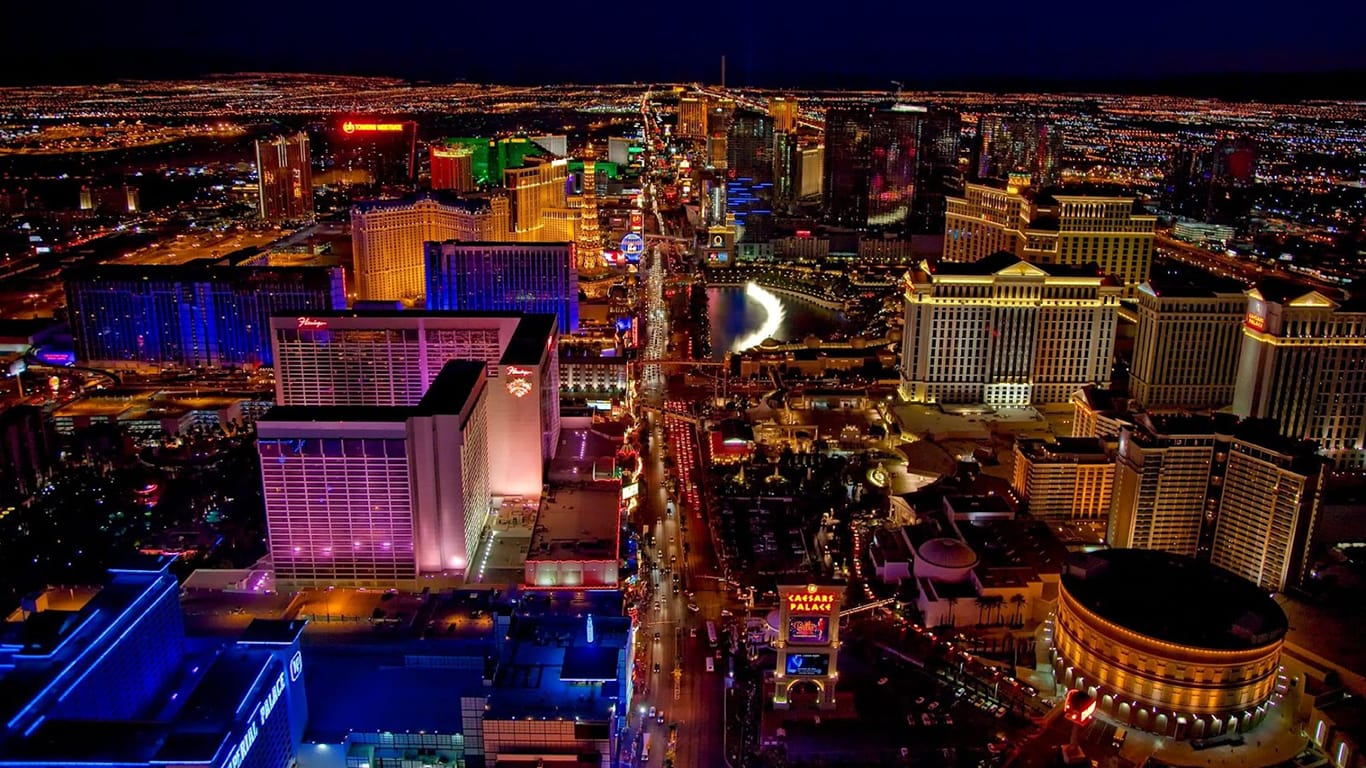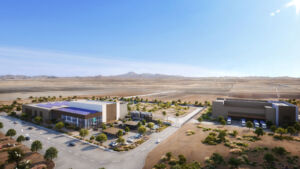Real estate has always been a reflection of its times. From historic brownstones in New York to sprawling ranches in Texas, the way we build and design communities mirrors economic shifts, cultural values, and technological progress. Today, with sustainability, innovation, and lifestyle integration at the forefront, some U.S. states are clearly leading the way in shaping what modern luxury means.
These states are not only producing skyline icons and luxury communities but are also reimagining how architecture, sustainability, and livability converge. Among them, Nevada—home to landmarks like Panorama Towers and the sought-after Sky Las Vegas condos—proves that even desert environments can serve as fertile ground for bold design and forward-thinking development.
1. Nevada – Desert Modernism and Skyline Innovation
Nevada, particularly Las Vegas, has reinvented itself as more than an entertainment capital—it’s now a hub of architectural creativity and lifestyle-driven design. The skyline has grown to feature iconic towers such as Panorama Towers, with its striking blue-glass façade, panoramic views of the Strip and Red Rock Canyon, and luxury amenities that include spas, fitness centers, pools, and concierge services. These developments show how desert modernism merges with global design sophistication.
Equally noteworthy are the Sky Las Vegas condos, which reflect the city’s ability to pair convenience with luxury while also weaving in eco-conscious building systems. Together, these properties highlight a Nevada real estate market that prioritizes both aesthetics and innovation. With master-planned communities in Summerlin and Henderson also showcasing sustainable features, Nevada proves that desert living can be elevated, responsible, and future-focused.
Why Nevada Inspires Innovation:
- Panorama Towers: Iconic twin towers that embody modern desert luxury.
- Sky Las Vegas condos: Sleek, amenity-rich residences with Strip access.
- Hospitality Influence: Luxury towers redefining the city’s skyline.
- Sustainable Communities: Henderson and Summerlin blending design with green practices.
- Visionary Development: Nevada’s skyline evolves to balance innovation with livability.
2. California – The Laboratory of Lifestyle Design
California has long been a testing ground for architectural innovation, from Hollywood Hills estates to Silicon Valley smart homes. Los Angeles continues to push the envelope with hillside residences featuring cantilevered designs, infinity pools, and seamless indoor-outdoor living that captures the state’s unique climate. Palm Springs adds another layer, where mid-century modern inspiration merges with today’s eco-friendly priorities.
San Francisco’s skyline showcases a different kind of creativity, where towers like 181 Fremont combine seismic engineering with luxury amenities, setting new benchmarks for how safety and style can coexist. California’s culture of risk-taking and innovation ensures that its real estate remains both aspirational and trendsetting, influencing design across the nation.
Why California Leads:
- Homes that embody bold architectural experimentation.
- Strong integration of sustainable design and smart-home tech.
- Influence from Hollywood, Silicon Valley, and design culture.
3. New York – Vertical Luxury and Cultural Identity
New York City has long been the global symbol of high-rise living, where real estate and cultural prestige go hand in hand. Historic co-ops on Park Avenue continue to represent timeless elegance, while Billionaires’ Row defines the pinnacle of exclusivity with its glass towers soaring above Central Park. Developments like 432 Park Avenue and Central Park Tower elevate vertical living into a lifestyle statement.
Beyond architecture, New York integrates culture, art, and design into its most prestigious residences. Homes here serve as both private retreats and global status symbols, often featuring private spas, curated art collections, and member-only dining clubs. Innovation in New York is about more than design—it’s about embedding real estate within the city’s cultural fabric.
Why New York Defines Real Estate Innovation:
- Cultural Integration: Homes as both residences and status markers.
- Vertical Luxury: Exclusive amenities and concierge services.
- Global Influence: Towers that symbolize wealth and identity.
4. Florida – Tropical Modernism and Oceanfront Futures
Florida, particularly Miami, has positioned itself as a showcase for tropical modernism and oceanfront resilience. Developments such as One Thousand Museum, designed by the late Zaha Hadid, blur the line between art and architecture. With organic curves and futuristic façades, these residences embody the city’s commitment to design excellence.
At the same time, Miami integrates eco-conscious design features that address rising seas and climate concerns, ensuring luxury does not come at the expense of sustainability. With its strong international influence and a blend of fashion, art, and architecture, Florida has become one of the most dynamic real estate markets in the world.
Why Florida Stands Out:
- Residences that turn architecture into art.
- International design influences from Europe and Latin America.
- Oceanfront towers blending luxury with resilience.
5. Texas – Scale, Innovation, and Master-Planned Growth
Texas has emerged as a powerhouse in real estate innovation, combining economic growth with ambitious development. Cities like Austin have pioneered eco-conscious luxury homes that embrace natural landscapes and prioritize sustainability, while still delivering striking architectural design.
Dallas and Houston, meanwhile, have reshaped their skylines with bold skyscrapers and large-scale mixed-use developments that emphasize both innovation and livability. With its emphasis on scale and master planning, Texas demonstrates that bigger projects can also be smarter, greener, and more community-focused.
Why Texas Leads:
- Master-planned communities built for growth and sustainability.
- Integration of bold architecture with livable design.
- Strong use of technology in development strategies.
6. Illinois – Architectural Heritage Meets Modern Innovation
Illinois, and particularly Chicago, carries the weight of being the birthplace of the skyscraper. This heritage continues to inspire the city’s evolving skyline, where historic landmarks inform bold new developments. Projects like Aqua Tower stand as proof of Chicago’s commitment to blending creativity with practicality.
New high-rises now merge architectural artistry with amenities tailored for modern living, from fitness centers to shared cultural spaces. The balance of respecting heritage while pushing innovation makes Illinois one of the most enduring leaders in American real estate design.
Why Illinois Inspires:
- Historic Legacy: Deep architectural history informs the present.
- Modern Developments: New towers combine art and lifestyle.
- Cultural Contribution: Residences that enrich the city’s identity.
7. Washington – Sustainable Luxury in the Pacific Northwest
Washington has become a leader in sustainable luxury, with Seattle at the heart of the movement. Towers such as Nexus and Escala integrate green building practices, wellness-centered amenities, and advanced smart-home technology. These projects cater to tech-driven lifestyles while staying aligned with environmental values.
The Pacific Northwest’s cultural focus on sustainability influences design decisions, ensuring that new developments blend luxury with ecological responsibility. In Washington, innovation is expressed as both lifestyle enhancement and environmental stewardship.
Why Washington Matters:
- Green Practices: Eco-conscious features built into high-rise living.
- Tech Integration: Smart homes for a digital generation.
- Cultural Fit: Architecture aligned with regional values.
8. Arizona – Desert Living Reimagined
Arizona has become a showcase for how desert landscapes can inspire bold design. Scottsdale and Phoenix lead the way with residences that use glass expanses, open layouts, and eco-conscious materials suited for hot climates. Homes here emphasize seamless indoor-outdoor living, proving that sustainability can be as stylish as it is practical.
The state’s master-planned communities often include golf courses, wellness centers, and spas, reflecting a lifestyle-first approach. Arizona demonstrates that real estate innovation doesn’t always require a coastline or skyscraper—it can thrive by embracing its natural environment while delivering modern sophistication.
Why Arizona Leads Regionally:
- Luxury desert modernism with sustainable features.
- Communities integrating recreation and wellness.
- Architecture rooted in the environment’s natural beauty.
Conclusion – Innovation as Lifestyle
Across the United States, states like Nevada, California, New York, Florida, Texas, Illinois, Washington, and Arizona are redefining real estate innovation. Each brings a unique perspective, blending design with sustainability, technology, and cultural values.
Nevada’s Panorama Towers and Sky Las Vegas condos prove that even in an arid desert, luxury towers can thrive while integrating sustainability and lifestyle-driven design. California continues to set global standards for experimentation, New York maintains cultural prestige, and Florida leads in tropical modernism. Texas shows how scale and planning can be intelligent, Illinois blends heritage with innovation, Washington focuses on sustainability, and Arizona reimagines desert living.
In these states, real estate innovation is more than architecture—it’s the creation of experiences. For today’s buyers, the ultimate luxury lies not only in an address or skyline view but in how design and development merge to create communities that truly reflect the future.




